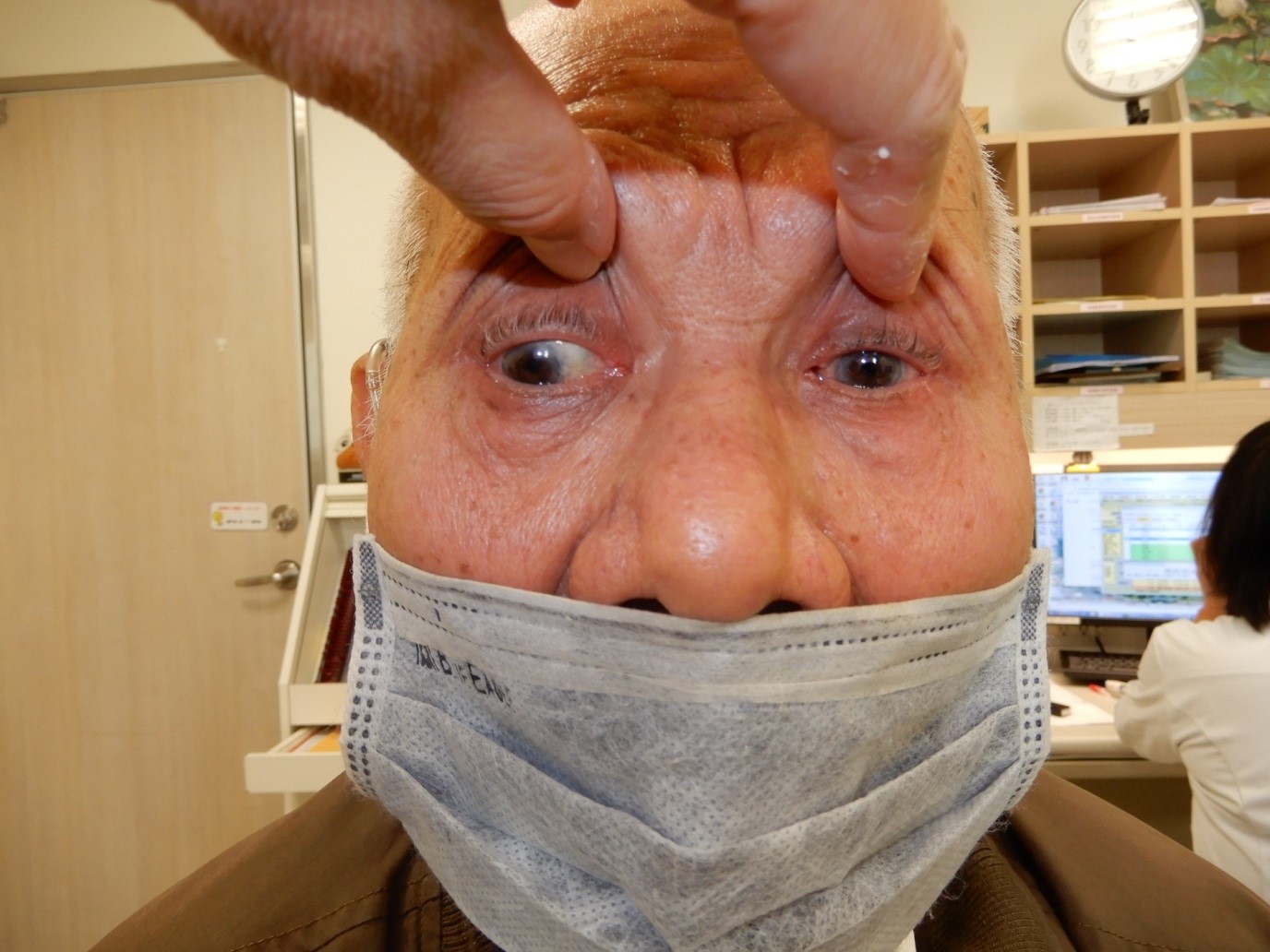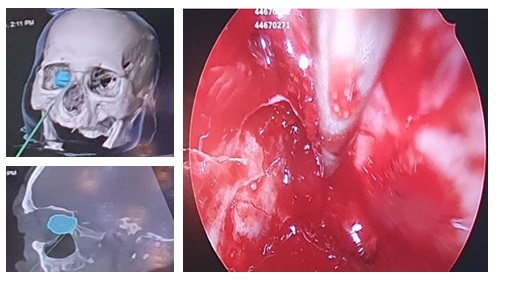Navigation-assisted positioning and endoscopic surgery for orbital tumor
The Department of Ophthalmology and the Department of Oral Surgery of the Taipei Veterans General Hospital have successfully removed a 3.3 cm diameter schwannoma from the right posterior eye of s 84-year-old man, by using the latest navigation-assisted positioning and endoscopic surgery.
After the surgery, the patient recovered well, and his vision went from no light perception to seeing his fingers the next day after the surgery, and miraculously recovered to 0.6 within six months.
Dr. Chieh-Chih Tsai and Dr. Cheng-Hsien Wu successfully applied the advanced computerized navigation assisted localization system with endoscopy, preoperative planning simulation, and intraoperative immediate guidance to locate the lesion, which greatly improve the safety and accuracy of orbital tumor surgery and prevent damage of deep orbital tumors to the eyes.
Tracing back to the patient’s history, he had a history of glaucoma, which had not been followed up for more than one year. The fundus examination showed that the optic nerve of the right eye was atrophic and the visual field was severely impaired, which was not consistent with the characteristics of the optic nerve and visual field of glaucoma in general. The right eye was found to be exotropia and protruded (Figure 1). A computerized tomographic examination revealed a 3.3 cm large orbital tumor behind the eye, compressing the eye muscles and optic nerve (Figure 2).
The tumor was in close proximity to important blood vessels, muscles and optic nerve, which increased the risk of surgery. .Therefore, Dr. Tsai discussed with the patient about the use of advanced computer navigation technology for pre-operative planning, intra-operative guidance, and precise positioning of the tumor and surrounding ocular tissues, as well as endoscopy to enhance the safety of the surgery.
Dr. Tsai said, “By using the oral superior chin sinus approach to reach the orbital floor, we can significantly reduce the chance of damaging important tissues in the eye and perform immediate navigational orbital reconstruction with rapid recovery, which is a new tool for safely removal of deep orbital tumors.”
 Figure 1.
Figure 1.
.jpg) Figure 2.
Figure 2.
 Figure 3.
Figure 3.